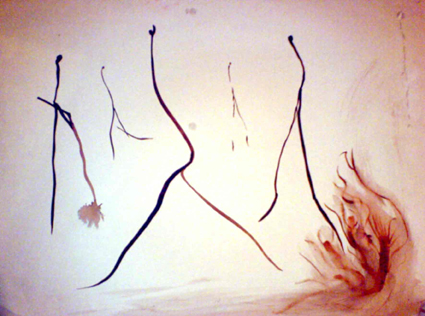|
|
|||||||||||
|
|
|
||||||||||
|
For Professionals Working with Stroke Survivors In 2009, The Art Therapy Space worked with stroke survivors and their carers, funded by Camden PCT for one pilot year. We provided individual and group art therapy at a number of community settings across the borough, including Kingsgate Resource Centre, NW6 Context The National Stroke Strategy (Department of Health, December 2007) states that people who have had a stroke, and their carers, must have access to further specialist emotional, practical and peer support (Quality Marker 3). Art Therapy is cited as an important service to be offered in order to support an individual's long-term mental health and psychological needs. The National Service Framework for Older People (Department of Health, March 2001) emphasises the need to support the mental health needs of older people, including carers and the need to improve the quality of life of older people and their carers. It also highlights the importance of providing “evidence based complementary therapies that support emotional, psychological and spiritual well-being.” (pg 26) and the need “to anticipate, recognise and treat any psychological distress experienced by the older person, carer or their family.” (pg 26)
Why Art Therapy with Stroke Survivors? After a stroke, the developed life skills that are gained in order to plan life and cope with change or trauma can no longer be relied upon in the same way. Individuals need space and time to come to terms with this severe trauma and its lasting effects.
For example:
Without
intervention, emotional issues may not be addressed and the risk of
deterioration may occur, particularly where depression is prevalent.
Art Therapy can bear witness to, hold and contain the above emotions and experiences.
The art in Art Therapy can
help communicate feelings and experiences that may be difficult to
verbalise. This facilitates a space to mourn losses,
confront emotions and fears and begin to explore new approaches to
living.
Through the continuity of a course of Art Therapy, the brain is stimulated, allowing past memories to resurface, cognitive ability to develop and new memories to form. Increased feelings of independence, empowerment and autonomy can have positive effects on interpersonal relationships and lead to a decreased sense of isolation. Clients may feel encouraged to engage further with rehabilitation services. By feeling more in control, the client is offered a more hopeful potential for change and an improved outlook on life.
By feeling more in control, the client is offered a more hopeful potential for change and an improved outlook on life.
Art Therapy in
Practice
Through referral we can provide either individual or group Art Therapy, on a weekly basis for a designated period of time.
Individuals referred to an
Art Therapist do not need to have had previous experience or skill in
art. The Art Therapist is not primarily concerned with making an
aesthetic or diagnostic assessment of the art work.
An ideal time to work in Art Therapy is post-hospitalisation in the community. Art Therapists can assist with ongoing assessment of physical abilities and psychological wellbeing. Throughout the course of Art Therapy we liaise regularly with staff and key workers for any ongoing concerns. We are able to contribute to the care team’s assessment of the individual through initial and continuous assessment and are able to contribute to reviews and multi-professional meetings.
Please contact us if you would like to discuss any particular needs.
|
|


